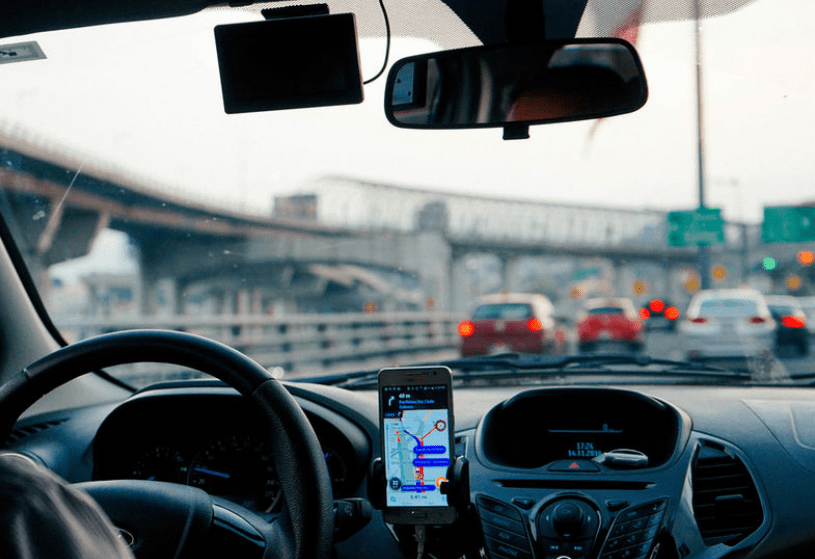New Year’s Day will usher in a big change to Manhattan travel: Once the ball has dropped in Times Square, any for-hire vehicle trip that touches the Manhattan Taxi Zone (anywhere south of 96th Street) will be surcharged by $2.50 (yellow cabs) or $2.75 (app-based vehicles like Uber).
There’s only one problem: It’s unclear whether New York State and the city Taxi and Limousine Commission have the mechanisms to accurately track the vehicles penetrating the zone.
The governor and the state legislature enacted the surcharges in March as a revenue-raiser for the MTA. The anticipated take is around $400 million a year, even allowing for an estimated 10 million fewer trips a year in yellows and Ubers due to higher fares — a drop that, by my calculations, should enable vehicles traveling in Manhattan to inch forward 3-4 percent faster, on average.
The surcharge legislation is a glass both one-quarter full and three-quarters empty. Any “internalization” of Manhattan congestion costs is welcome, and the first surge of revenue is earmarked to fill gaps in transit deserts. But compared to the home run of full-fledged congestion pricing, the surcharge is at best a cheap single since it doesn’t cover travel by private cars. Indeed, the for-hire vehicle surcharge will actually incentivize ordinary driving by diminishing Manhattan gridlock at no cost to civilian motorists.
But that’s old news. The new object of concern is that the city, which has exclusive oversight of for-hire vehicles, has yet to promulgate policies to ensure that all taxi-zone trips will actually be surcharged and that the dollars and cents will go, as mandated, to the state Department of Taxation and Finance. The sticking point remains monitoring those for-hire vehicles that enter the zone.
This is no small point, especially insofar as vehicles dispatched by Uber, Lyft and Via will constitute a majority of surcharge-subject trips. Since the surcharges will be embedded in the fares collected by the companies, they’ll hold sway over the amounts they turn over to New York State. It’s anyone’s guess how scrupulous they’ll be, but what’s not debatable is that opportunities for lowballing will be diminished — if not eliminated outright — if the TLC can independently determine which trips were surcharged as it is now able to do with taxis that are connected directly with the agency’s central computer monitoring system.
Direct connections would obviate burdensome and often disparate reporting requirements that monitor taxis rather scrupulously, while the app-based services benefit from a more laissez-faire approach. Better still, New York City could mandate that every taxi — yellow, app-based, green, livery, black — be outfitted with GPS that continuously transmits the vehicle’s location and route to authorities. With the right software integration, including a geofencing mechanism, such a GPS could track taxi zone penetrations and also directly charge passengers every time zone penetration occurred.
This would allow the TLC to monitor all for-hire vehicles in real time, while also thwarting any possible short-changing by private interests. At least as importantly, this sophisticated GPS capability would enable the legislature to replace its meat-axe, one-size-fits-all taxi surcharge with a granular surcharge program geared to the congestion each yellow or Uber trip actually causes.
I outlined such a program on Streetsblog in May. Basically, each for-hire ride would be charged for the time it travels in the Manhattan taxi zone. Time in the zone is a near-perfect proxy for congestion causation — at least in Manhattan — since it captures both trip distance and prevailing vehicle volumes. A per-minute charge would automatically rise for long trips in gridlock conditions and fall for shorter and off-peak trips.
Not only that, but with GPS-based zone-time charging, app-based for-hire vehicles could be made to pay a supplemental charge for time in the zone without a passenger. An Uber or Lyft that is cruising without a passenger, or, as is more common these days, is occupying curb space or double-parking while the driver waits to be pinged, could be made to pay for slowing down traffic.
We should dub this empty time “trawling” rather than cruising since it pertains to time in the zone whether the vehicle is moving or not. The per-minute charge for trawling could be set at, say, 50 percent of the rate for time with a passenger. The point of course is to dissuade Uber and Lyft drivers from trawling in the zone, where their congestion causation is generally highest, and instead incentivize them to ply other parts of the city, where transit alternatives are less abundant. (Yellows wouldn’t be subject to the trawling charge because their numbers are capped; not to mention the debt owed them by New York City for letting app-based vehicles flood the taxi zone and wrecking their franchise.)
Is the sophisticated technology available? Yes. A state-of-the-art GPS that fits any vehicle’s on-board diagnostics system is currently operating in several hundred yellow cabs in the city — with contracts to add nearly 2,000 more. Such systems obviously might not be ready for every for-hire vehicle in time for the Jan. 1 surcharge launch, but it is imperative that the state and the TLC start immediately to figure out the fastest way for this new technology to be mandated so that the congestion surcharge beginning in the New Year doesn’t die in its crib.
Looking towards a more sensible future, such a mandate could lay the groundwork for switching the all-or-nothing $2.50-$2.75 surcharges to more efficient and equitable time-based pricing, as part of comprehensive congestion pricing legislation being readied for passage in Albany this winter.






